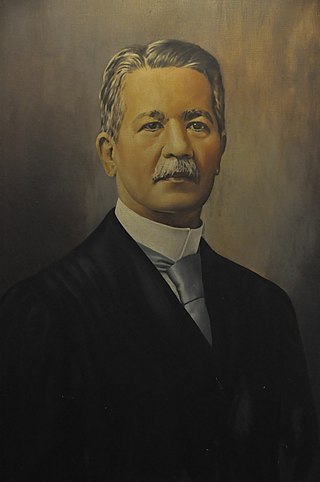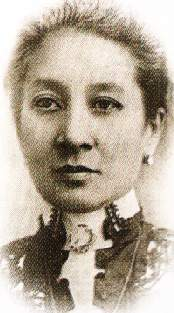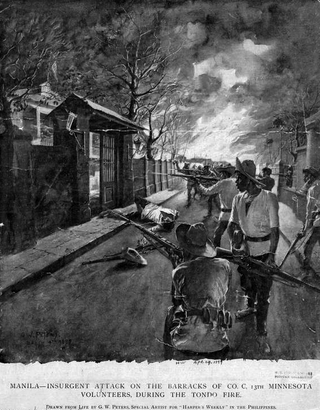
The Katipunan, officially the Kataastaasan Kagalang-galang na Katipunan ng mga Anak ng Bayan and abbreviated as the KKK, was a revolutionary organization founded in 1892 by a group of Filipino nationalists Deodato Arellano, Andrés Bonifacio, Valentin Diaz, Ladislao Diwa, José Dizon, and Teodoro Plata. Its primary objective was achieving independence from the Spanish Empire through an armed revolution. It was formed as a secret society before its eventual discovery by Spanish authorities in August 1896. This discovery led to the start of the Philippine Revolution.

Quezon City, also known as the City of Quezon and Q.C., is the most populous city in the Philippines. According to the 2020 census, it has a population of 2,960,048 people. It was founded on October 12, 1939, and was named after Manuel L. Quezon, the second president of the Philippines.

Caloocan, officially the City of Caloocan, is a 1st class highly urbanized city in Metro Manila, Philippines. According to the 2020 census, it has a population of 1,661,584 people making it the fourth-most populous city in the Philippines.

Malabon, officially the City of Malabon, is a 1st class highly urbanized city in the National Capital Region of the Philippines. According to the 2020 census, it has a population of 380,522 people.

San Juan, officially the City of San Juan, is a 1st class highly urbanized city in the National Capital Region of the Philippines. According to the 2020 census, it has a population of 126,347 people. It is geographically located at Metro Manila's approximate center and is also the country's smallest city in terms of land area.

Cayetano Simplicio Arellano y Lonzón was the first Chief Justice of the Supreme Court of the Philippines under the American Civil Government. Cayetano Arellano had occupied a high position in Aguinaldo's government. He worked with the Americans under General Otis and re-established the Audiencia Territorial as the Supreme Court. He served as Chief Justice from 1901 until his retirement on April 12, 1920, making him the longest to serve as chief justice in Philippine history.

Epifanio de los Santos y Cristóbal, also known as Don Pañong or Don Panyong, was a notable Filipino historian, journalist, and civil servant. He was regarded as one of the best Filipino writers and a literary genius. He also entered politics, serving as a member of the Malolos Congress from 1898 to 1899 from Nueva Ecija and later as governor of Nueva Ecija from 1902 to 1906. As a lawyer, he was named as the district attorney of San Isidro, Nueva Ecija in 1900 and later as fiscal of the provinces of Bulacan and Bataan. He was named as an assistant technical director of the Philippine Census in 1918. He was appointed Director of the Philippine Library and Museum by Governor General Leonard Wood in 1925, serving until his death in 1928.
Rafael Crame y Pérez de Tagle was a Filipino Constabulary officer who served as Chief of the former Philippine Constabulary from 1917 until his death in 1927.

Santa Cruz is a district in the northern part of the City of Manila, Philippines, located on the right bank of the Pasig River near its mouth, bordered by the districts of Tondo, Binondo, Quiapo, and Sampaloc, as well as the areas of Grace Park and Barrio San Jose in Caloocan and the district of La Loma in Quezon City. The district belongs to the 3rd congressional district of Manila.

Don Felipe Agoncillo y Encarnación was the Filipino lawyer representative to the negotiations in Paris that led to the Treaty of Paris (1898), ending the Spanish–American War and achieving him the title of "outstanding first Filipino diplomat."

The Manila North Cemetery is one of the oldest cemeteries in Metro Manila, Philippines. The cemetery is owned by and located in the City of Manila, the national capital, and is one of the largest in the metropolis at 54 hectares. It is located alongside Andrés Bonifacio Avenue and borders two other important cemeteries: the La Loma Cemetery and the Manila Chinese Cemetery. Numerous impoverished families notably inhabit some of the mausoleums.

Juan Felipe de Jesús Nakpil, KGCR, KSS known as Juan Nakpil, was a Filipino architect, teacher and a community leader. In 1973, he was named one of the National Artists for architecture. He was regarded as the Dean of Filipino Architects.

Doña Marcela Mariño de Agoncillo was a Filipina who was the principal seamstress of the first and official flag of the Philippines, gaining her the title of "The Mother of the Philippine Flag."

José Cándido Alejandrino y Magdangal was a Philippine Republican Army general during the Philippine Revolution and the Philippine–American War.

The Second Battle of Caloocan, alternately called the Second Battle of Manila, was fought from February 22 to 24, 1899, in Caloocan during the Philippine–American War. The battle featured a Filipino counterattack aimed at gaining Manila from the Americans. This counterattack failed to regain Manila mainly because of lack of coordination among Filipino units and lack of artillery support.

The following is an alphabetical list of articles related to the Philippine capital region of Metro Manila.

Kian delos Santos, Carl Arnaiz and Reynaldo de Guzman were three teenagers who were killed on August 16 to 18, 2017, during the course of the Philippine drug war.

The Loyola Memorial Park is a cemetery and columbarium in Marikina, Metro Manila, Philippines. It was established in 1964, and was developed by Group Developers, Inc., which operates a second Loyola Memorial Park in Sucat, Parañaque. The Marikina park covers an area of 38,000 square meters (410,000 sq ft) with 60,000 burials as of 2019.






















